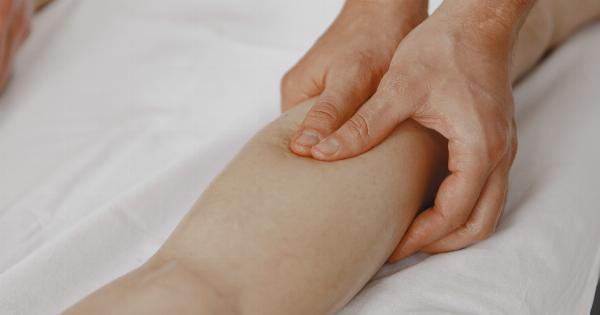Effective pain control after surgery is crucial for ensuring patient comfort and promoting optimal recovery.
Managing postoperative pain not only alleviates the physical and emotional distress experienced by patients but also plays a vital role in improving outcomes and preventing complications. This article explores the best practices in pain management after surgery, including various techniques and medications that can be employed to provide effective postoperative pain relief.
Importance of Effective Pain Control after Surgery
Pain is a common consequence of surgery and can significantly impact the patient’s overall wellbeing. Unmanaged postoperative pain can lead to increased stress, delayed recovery, decreased mobility, and a higher risk of complications.
By implementing effective pain control measures, healthcare providers can not only enhance patient comfort but also facilitate better postoperative outcomes.
Adequate pain management can help improve patients’ ability to cough, breathe, and move, thus reducing complications such as pneumonia and deep vein thrombosis.
Assessment and Individualized Pain Management Plans
Every patient’s experience of pain is unique, and a one-size-fits-all approach is unsuitable when it comes to pain management after surgery.
Individualized pain management plans should be developed, taking into account the patient’s medical history, type of surgery, and personal preferences.
Regular pain assessments should be conducted using standardized pain scales to evaluate the intensity and characteristics of the pain experienced by the patient.
This information guides healthcare professionals in tailoring the pain management regimen to suit the individual’s specific needs.
Non-Pharmacological Pain Management Techniques
Non-pharmacological pain management techniques can complement or reduce the reliance on medication, providing additional relief to patients after surgery. These techniques include:.
1. Deep Breathing and Relaxation Exercises
Deep breathing exercises and relaxation techniques such as meditation and guided imagery can help patients reduce muscle tension and promote a sense of calm.
By focusing on their breathing and redirecting their thoughts, patients can experience a decrease in pain perception.
2. Heat and Cold Therapy
Application of heat or cold packs can be an effective method to relieve surgical site pain. Heat therapy increases blood flow to the area, promoting healing and soothing discomfort, while cold therapy helps numb the area and reduce inflammation.
3. Transcutaneous Electrical Nerve Stimulation (TENS)
TENS is a non-invasive technique that involves the use of low-voltage electrical currents to stimulate areas of pain. TENS units can be applied to the skin near the surgical site, temporarily blocking pain signals and providing relief.
4. Acupuncture
Acupuncture has been used for centuries to alleviate pain by inserting thin needles into specific points on the body.
It is thought to stimulate nerves, increase blood flow, and trigger the release of endorphins, which are natural pain-relieving compounds.
Pharmacological Pain Management Options
Pharmacological interventions play a crucial role in postoperative pain control. The choice of medications and their administration should be based on the patient’s pain severity, medical history, and potential interactions with other drugs.
Commonly used medications for postoperative pain include:.
1. Nonsteroidal Anti-Inflammatory Drugs (NSAIDs)
NSAIDs, such as ibuprofen and naproxen, reduce pain by decreasing inflammation at the surgical site. These medications are particularly effective in managing mild to moderate pain and are often used in combination with other pain relievers.
2. Opioids
Opioids are potent pain relievers that work by binding to opioid receptors in the brain, spinal cord, and other parts of the body.
They provide effective pain control for moderate to severe postoperative pain but carry risks of side effects and addiction.
3. Local Anesthetics
Local anesthetics can be administered as injections or through topical application to numb specific areas and provide targeted pain relief. They are commonly used in procedures that involve a small area, such as wound stitching or dental surgeries.
4. Patient-Controlled Analgesia (PCA)
PCA allows patients to self-administer small doses of pain medication by pressing a button on a programmed device. This empowers the patient to have more control over their pain management while ensuring they receive the proper dosage.
Multimodal Analgesia
Multimodal analgesia involves combining different pain management techniques or medications to achieve better pain control while minimizing side effects.
By using multiple approaches, healthcare providers can target pain from various angles, optimizing pain relief and reducing the reliance on any one method.
For example, a multimodal analgesia approach may involve combining NSAIDs with opioids or utilizing regional anesthesia alongside systemic pain medication.
This strategy can enhance pain control while decreasing the dosage and potential risks associated with individual drugs or techniques.
The Role of Healthcare Professionals in Pain Management
Healthcare professionals play a crucial role in ensuring effective pain control after surgery. They must communicate openly with patients, educate them about pain management options, and address any concerns or misconceptions.
Additionally, healthcare providers should closely monitor patients for any signs of inadequate pain relief or adverse reactions to medication and adjust the pain management plan as necessary.
Regular evaluations and open communication enable timely adjustments to the pain control regimen, leading to improved patient comfort and satisfaction.
Conclusion
Effective pain control after surgery is essential to provide optimal patient comfort, enhance recovery, and minimize complications.
By employing a combination of non-pharmacological techniques, appropriate pharmacological interventions, individualized pain management plans, and multimodal analgesia approaches, healthcare professionals can ensure that patients receive the utmost care and support in their postoperative pain relief journey.





























